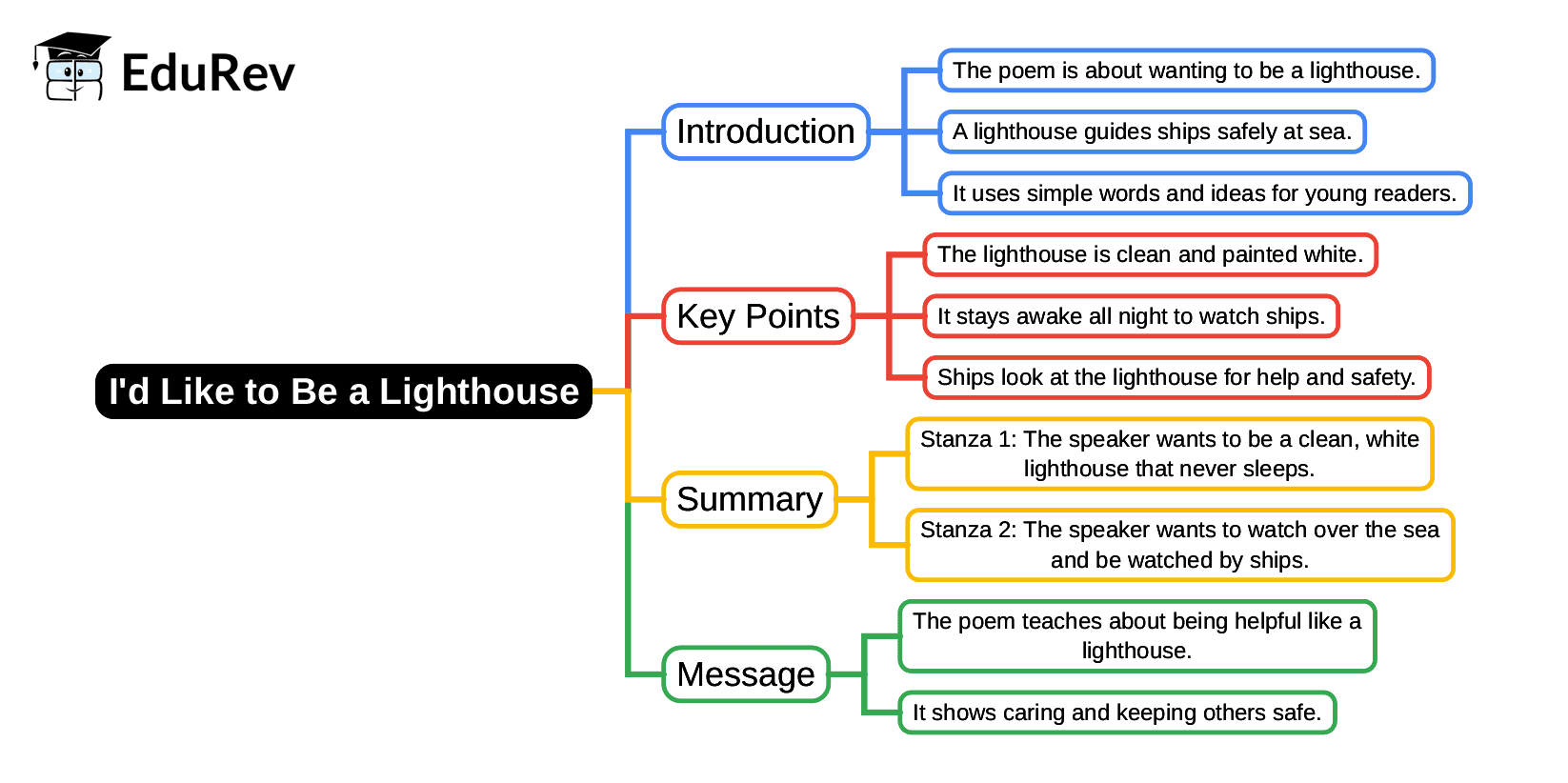Class 2 Exam > Class 2 Notes > English Class 2 ICSE > Mind Map: I'd Like to Be a Lighthouse
Mind Map: I'd Like to Be a Lighthouse | English Class 2 ICSE PDF Download

The document Mind Map: I'd Like to Be a Lighthouse | English Class 2 ICSE is a part of the Class 2 Course English Class 2 ICSE.
All you need of Class 2 at this link: Class 2
|
38 docs|19 tests
|
FAQs on Mind Map: I'd Like to Be a Lighthouse - English Class 2 ICSE
| 1. What are the main roles and responsibilities of a lighthouse? |  |
Ans. Lighthouses primarily serve as navigational aids for maritime pilots at sea or on inland waterways. Their main responsibilities include providing a visual reference point for ships, warning of dangerous coastlines, reefs, and safe entry points to harbors. They also often contain light signals or sound signals that can help vessels determine their position and navigate safely.
| 2. How do lighthouses work to aid navigation? |  |
Ans. Lighthouses work by emitting light signals that vary in color, intensity, and timing to help sailors identify specific locations. These signals are often unique to each lighthouse, allowing navigators to determine their position relative to the coastline or other navigational hazards. Some lighthouses may also use sound signals, such as horns or bells, to further assist in navigation, especially in foggy conditions.
| 3. What is the history of lighthouses and their development over time? |  |
Ans. The history of lighthouses dates back to ancient times, with the first recorded lighthouse being the Pharos of Alexandria built around 280 BC. Over the centuries, lighthouses have evolved from simple fires on the shore to complex structures equipped with advanced lighting technology. The introduction of electricity in the 19th century marked a significant development, allowing for brighter and more reliable signals, which improved maritime safety.
| 4. What are the different types of lighthouses? |  |
Ans. There are several types of lighthouses, including coastal lighthouses, which are located on shorelines; offshore lighthouses, which are built on rocks or reefs; and floating lighthouses, which are buoy-like structures that can be moved with tides and currents. Additionally, lighthouses can be classified based on their construction materials, such as stone, brick, or metal, each serving different environmental needs.
| 5. How do lighthouses contribute to maritime safety? |  |
Ans. Lighthouses significantly contribute to maritime safety by helping to prevent shipwrecks and accidents at sea. By providing critical information about navigational hazards, lighthouses guide vessels safely through treacherous waters. They also play an essential role in search and rescue operations, offering a point of reference for distressed vessels and aiding in the coordination of rescue efforts.
Related Searches















